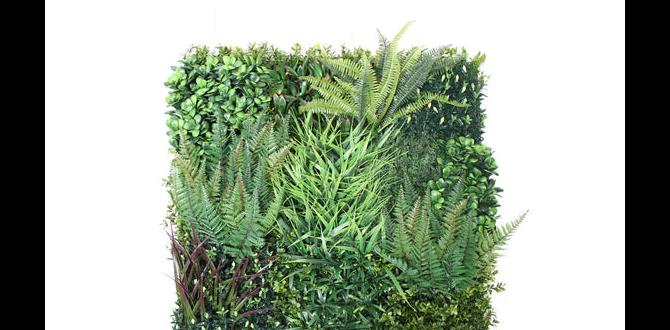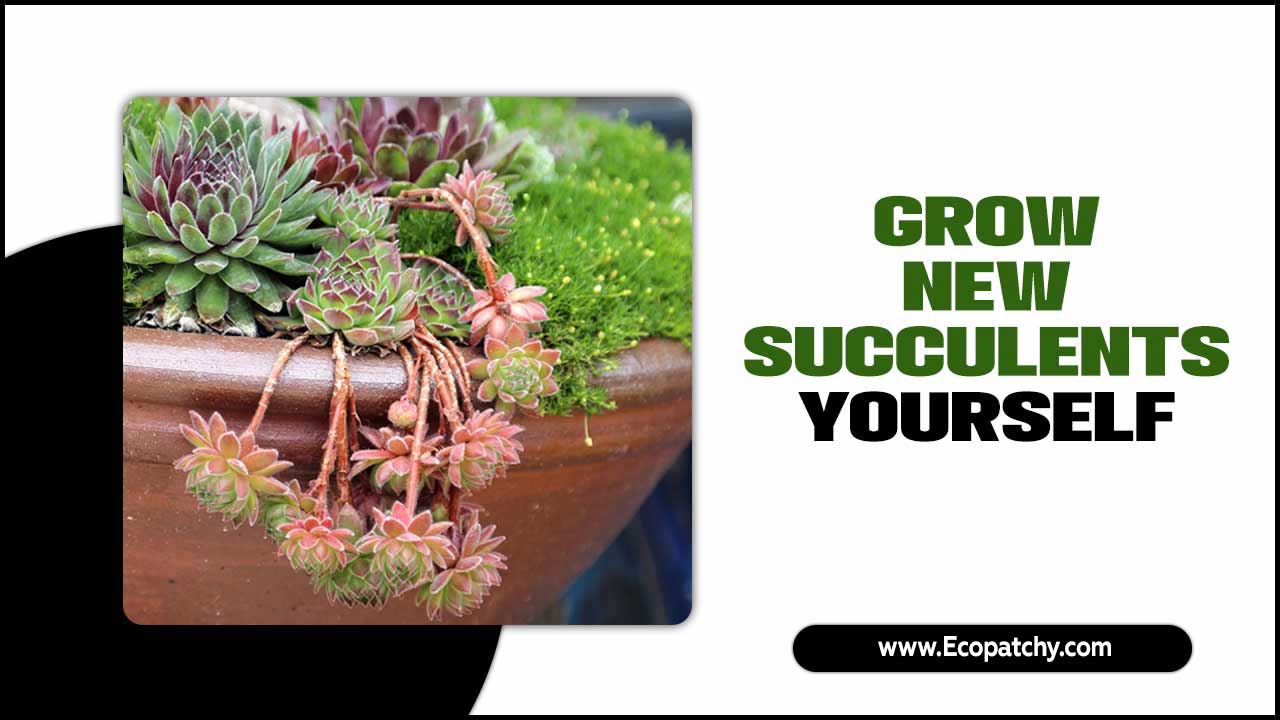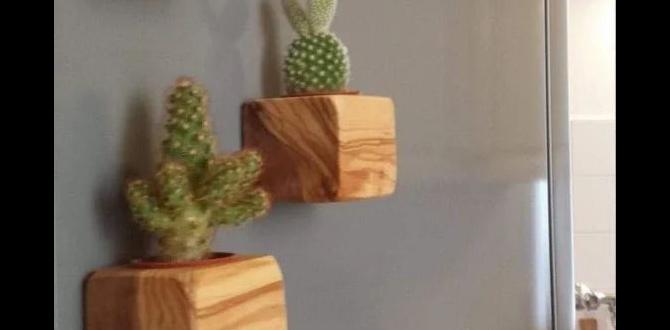Have you ever seen a succulent and thought, “Wow, that looks cool!”? These little plants can brighten up any outdoor space. But did you know that caring for succulents outdoors can be simple and fun? Many people worry about keeping them alive. It seems tricky at first, but with a few easy tips, anyone can do it.
Imagine your garden filled with colorful, thriving succulents. Wouldn’t that be amazing? A fun fact is that succulents often store water in their leaves. This helps them survive in dry places. Still, they need some help from us, especially when they are outside. Proper care will keep them looking their best.
In this article, we’ll explore how to care for succulents outdoors. Whether you have a sunny balcony or a shaded yard, these tips will help you create a happy home for your plants. Get ready to learn some easy steps and enjoy watching your succulents grow!
How To Care For Succulents Outdoors: Tips And Techniques

How to Care for Succulents Outdoors
Caring for succulents outdoors can be simple and fun. First, choose a sunny spot; succulents love light. Ensure they have well-draining soil to prevent root rot. Water them deeply but infrequently – too much water can be harmful! Did you know some succulents can survive a drought? Monitor for pests like mealybugs and treat them quickly. With attention and love, your outdoor succulents will thrive and bring joy to your garden.Understanding Succulents
Definition and characteristics of succulents. Types of succulents suitable for outdoor growth.Succulents are unique plants that store water in their leaves, stems, or roots. They have thick, fleshy tissues that help them survive in dry places. Many succulents can thrive outdoors where there’s sunlight and fresh air. Here are some types that love the outdoors:
- Agave
- Aloe Vera
- Jade plant
- Hens and Chicks
These plants come in different shapes and colors. They can add life to your garden! Understanding them is the first step to caring for them well.
What makes succulents special?
Succulents can store water, making them resilient plants. This property helps them survive harsh climates.Choosing the Right Location
Factors to consider for sunlight exposure. Importance of protection from extreme weather conditions.Choosing the right spot for your succulents is key to their happiness. Succulents love sunlight, but not all plants enjoy the same amount. Some prefer bright, direct sunlight. Others need a bit of shade. Too much sun can harm them. You also need to keep them safe from extreme weather. Heavy rain or strong winds can damage them. Think about your succulents before deciding where to place them. A good location helps them grow strong and healthy!
What factors should I consider for sunlight exposure?
Consider how much sun your succulents need. Some need full sun, while others thrive in partial shade. Watch how the sun moves in your yard or garden throughout the day. This will help you find the best spot.
Why is protection from extreme weather important?
Extremes can hurt your plants. Just like us, succulents prefer comfort. Shield them from heavy rain and strong wind. Too much of either can damage their leaves. A simple cover or windbreak can help.
Soil and Pot Selection
Best soil types for outdoor succulents. Choosing the right pots for drainage and growth.Choosing the right soil is crucial for outdoor succulents. They love soil that drains well since they hate soggy feet. A mix of potting soil, sand, and perlite usually does the trick. You want to make sure it feels light and fluffy, almost like a cloud but without the rain!
Pots are just as important; they need drainage holes like a sponge needs a drink. Without these holes, your succulents might drown. Consider using ceramic or terracotta pots. They look stylish and work great. Remember, happy succulents grow tall and thrive, so don’t be afraid to give them a good home!
| Soil Type | Benefits |
|---|---|
| Potting Soil | Light and provides nutrients. |
| Sand | Improves drainage. |
| Perlite | Offers aeration. |
Watering Techniques
How to establish a watering schedule. Signs of overwatering and underwatering to watch for.Creating a watering schedule for your succulents is important. Water them deeply but less often. Aim to water every 1-2 weeks. Check the soil to see if it’s dry before watering again. Overwatering can cause roots to rot, while underwatering leads to shriveled leaves. Watch for these signs:
- **Overwatering**: Leaves turn yellow or mushy.
- **Underwatering**: Leaves become brown and shriveled.
Remember, it’s usually better to underwater than overwater. Your plants will thank you!
How can I tell if my succulent is overwatered or underwatered?
Check for yellow leaves or mushy spots for overwatering. For underwatering, look for brown, shriveled leaves. Adjust your watering schedule as needed!
Fertilization Tips
Recommended fertilizers for outdoor succulents. Frequency and application methods for optimal growth.Feeding your outdoor succulents can feel like an exciting science experiment—especially since they’re not picky eaters! Use a balanced, water-soluble fertilizer with a ratio of 2-7-7. This is like a buffet for them! Apply it every 4-6 weeks during the growing season. Just remember, a little goes a long way. Over-fertilizing can make them grumpy and won’t help them become Super Succulents!
| Fertilizer Type | Application Frequency | Notes |
|---|---|---|
| Balanced Fertilizer (2-7-7) | Every 4-6 weeks | Water it down for best results! |
Your succulents will thrive with proper care. They’ll thank you one leaf at a time!
Pest and Disease Management
Common pests affecting outdoor succulents. Preventive measures and treatment options.Pests can harm your outdoor succulents. Common culprits include aphids, mealybugs, and spider mites. Regular checks help catch them early. Use insecticidal soap to treat these pests. A gentle spray works wonders. You can also use neem oil for a natural approach. Prevention is key. Keep plants dry to deter pests. Ensure good airflow around your succulents. This makes them stronger against attacks.
What are common pests affecting outdoor succulents?
Aphids, mealybugs, and spider mites are the main pests that hurt outdoor succulents. They suck sap and weaken the plants.
Preventive Measures
- Check plants regularly.
- Water in the morning.
- Keep the area clean.
Treatment Options
- Use insecticidal soap.
- Apply neem oil.
- Remove affected leaves.
Seasonal Care Considerations
Adapting care routines with changing seasons. Protection strategies during winter months.As the seasons change, so should your approach to succulent care. During hot months, keep them hydrated but not soaked. In summer, these plants love sunshine, but too much can lead to a tan—yikes! As winter rolls in, bring out your protective gear. Wrap your succulents in cozy blankets or bring them indoors to escape the chill. Remember, succulents are like us—no one wants to be freezing in their pajamas!
| Season | Care Tips |
|---|---|
| Spring | Increase watering as they start to grow. |
| Summer | Water regularly and provide shade during heat waves. |
| Fall | Prepare for winter, reduce watering. |
| Winter | Protect from frost and minimize watering. |
Keep these tips in mind to ensure your succulents thrive all year. Happy gardening!
Propagation of Outdoor Succulents
Techniques for propagating succulents outdoors. Best practices for successful propagation.Propagating outdoor succulents is easy and fun. You can use several techniques to grow more plants. One common method is leaf propagation. Simply remove a leaf from a healthy plant and place it on the soil. Water it lightly. Another method is stem cuttings. Cut a healthy stem and let it dry for a day before planting it in soil. Here are some best practices for success:
- Use clean tools to avoid infections.
- Choose the right time, like spring or summer, for growth.
- Keep soil slightly moist but not soggy.
With these tips, you can fill your garden with beautiful succulents!
How do you propagate succulents outdoors?
You can propagate outdoor succulents through leaf propagation or stem cuttings. Both methods are simple and effective. Make sure to use clean tools and provide the right care.
Designing Your Outdoor Space
Ideas for arranging succulents in outdoor gardens. Complementary plants and landscaping tips.Adding succulents to your outdoor space can create a beautiful garden. Arrange them in clusters for a stunning look. Use rocks or gravel to add texture around them. Pair succulents with flowers or grasses for variety. Consider hues that contrast or complement your plants. Here are some tips:
- Choose colorful succulents like sedum and jade plants.
- Mix with drought-resistant plants like lavender or rosemary.
- Place larger plants in the back and smaller ones in front.
This design can bring life to any outdoor area. Have fun creating your dream garden!
What plants work well with succulents?
Flowers like lavender and sun-loving plants, like rosemary, blend nicely. They enhance the beauty of succulents while also thriving in similar conditions.
Conclusion
To care for succulents outdoors, choose a sunny spot and use well-draining soil. Water them sparingly, and keep an eye out for pests. Remember to protect them from extreme weather. By following these simple steps, you can help your succulents thrive. For more tips and fun ideas, check out gardening books or online resources together!FAQs
What Are The Best Outdoor Conditions For Growing Succulents, Including Sunlight And Temperature Requirements?To grow succulents well, they need lots of sunlight. Choose a spot with 6 to 8 hours of sun each day. They like warm weather, ideally between 60°F and 80°F (15°C to 27°C). Make sure they don’t sit in water, or they might get sick. Keeping them dry and sunny helps them grow strong!
How Often Should Succulents Be Watered When Grown Outdoors, And What Is The Best Watering Technique?You should water your outdoor succulents about every two weeks. If it’s really hot, you might need to water them more often. The best way to water is to soak the soil until it’s wet. Let the soil dry out completely before watering again. This keeps your succulents healthy and happy!
What Types Of Soil And Containers Are Ideal For Planting Succulents Outside?For planting succulents outside, you need well-draining soil. A mix of sand and potting soil works great. You should use containers with holes at the bottom. This helps water escape and keeps your plants healthy. Choose pots made of terracotta or ceramic for best results!
How Can I Protect My Outdoor Succulents From Pests And Harsh Weather Conditions?To protect your outdoor succulents, you can do a few simple things. First, place them in a sunny spot but out of strong winds. You can use a light cover like a cloth to keep them safe from harsh weather. To keep pests away, check your plants often and remove any bugs you see. You can also use insect spray made for plants if needed.
What Common Signs Indicate That My Outdoor Succulents Are Not Healthy, And How Can I Address These Issues?If your outdoor succulents look sad, they might be unhealthy. Signs include yellow leaves, droopy stems, or brown spots. You can fix these issues by checking for too much water or direct sunlight. Make sure they have good drainage and get just enough sun. Trim off any dead leaves to help your plants feel better!








